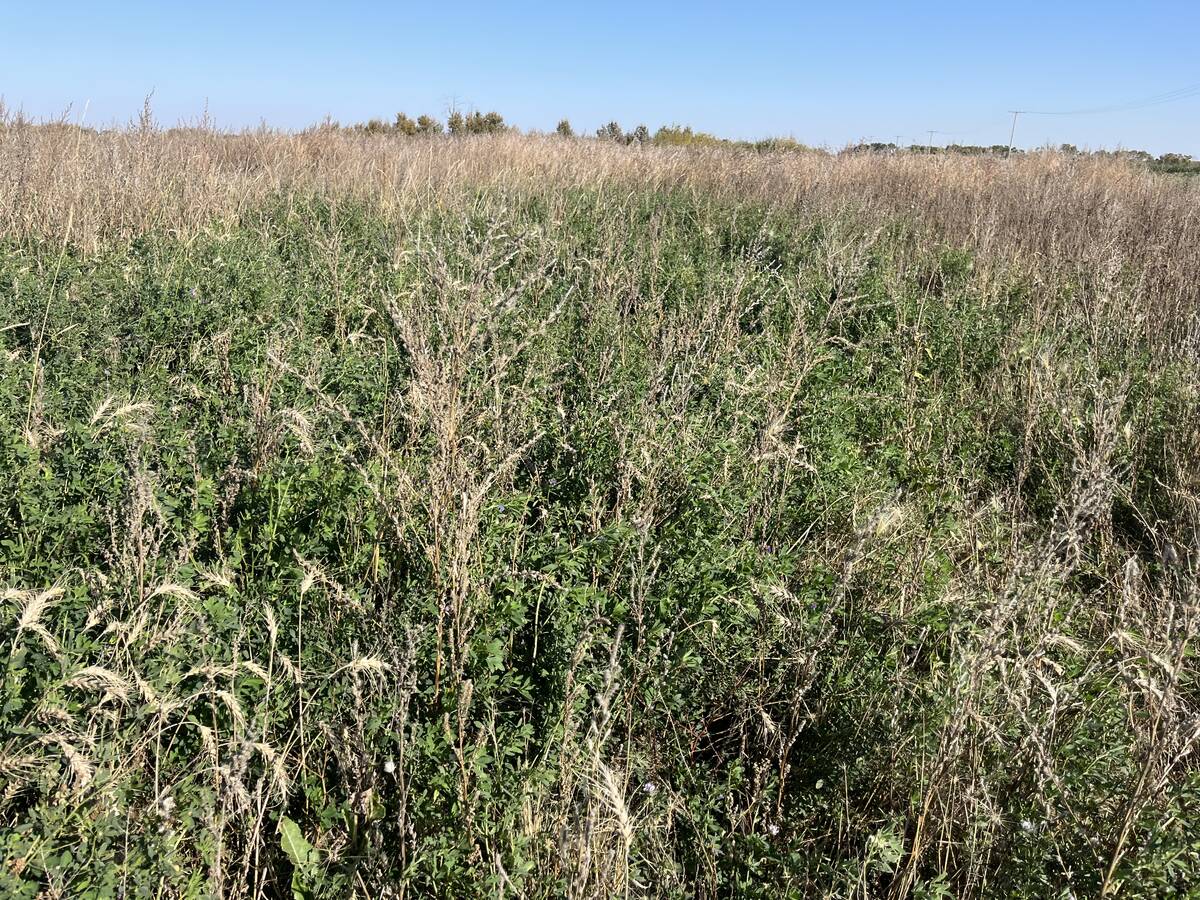RED DEER – Setting a target of a 90 percent farrowing rate on a hog farm is possible but maintaining that level is the real success story.
“There are people who work to get the farm working and there is stockmanship,” said Egidijus Mickevicius of Pig Improvement Canada.
Mickevicius and Pat Monaghan of Paragon Pork explained how to set realistic targets for a hog farm at the Red Deer swine technology workshop Oct. 22.
Gilts represent up to a quarter of the breeding herd, so proper development builds a good sow.
Read Also

Dormant seeding forages frees up farmer time and gets ahead of weeds
Dormant seeding isn’t common practice and can appear daunting, but there are some techniques to give Manitoba farmers an edge
Mickevicius said keeping a record of all activities is important. Staff needs to know how to recognize signs of estrus and record when each cycle happens.
Signs of heat include swollen vulva, possibly showing mucus, ears and tail up, biting on the bars, glazed eyes and restlessness.
About 14 days before breeding, get the gilts used to their neighbours, show them where the feed is and get them vaccinated early.
Do not breed on the first heat cycle. Breeding will be more successful in the second or third cycle. Mickevicius prefers to breed on the third heat cycle when gilts are bigger and older.
A good breeding weight is between 135 and 148 kilograms and 210 to 230 days of age.
“Treat heat checking and breeding as two separate tasks,” said Monaghan who works with 4,700 sows on two farms in central Alberta.
He recommends breeding females one hour after heat detection and then every morning as long as they are in solid heat. The best results are when sows are inseminated at or 24 hours before ovulation, which occurs usually in the second half of the heat.
Individuals vary, so multiple matings are needed. The key to successful breeding is to repeat the insemination as long as the female is in standing heat. Females should not have to be bred more than twice.
“Always take your time. Rushing the job is going to cost you,” Monaghan said.
Staff training is also important. Workers should be shown how to properly organize equipment before they start and learn the importance of good hygiene. Proper semen storage is also important.
Studies show a third of refrigerators used for semen storage are at unacceptable temperatures. The best temperature is 15 to 18 C. The fridges need to be kept clean and not overloaded so the air can circulate.
When moving the semen, keep it cool and do not put more than 20 doses in a cooler. Put cool gel packs on the bottom of the cooler and on top of the doses.
At breeding time, move pigs in small groups and avoid moving too soon so implantation can take place.
“Never move a bred sow between day five and 30 after breeding,” Monaghan said. “It is the golden rule. Don’t break it.”
After breeding, ad lib feeding for females appears to work best because it improves farrowing and increases weaning weights. By the fourth or fifth day after breeding, let them have all the feed they want rather than ramping it up over time.
Trials have shown that maximizing the sow’s intake after weaning improves the ovulation rate. Water must be available at all times and they should be checked to make sure they are eating.















